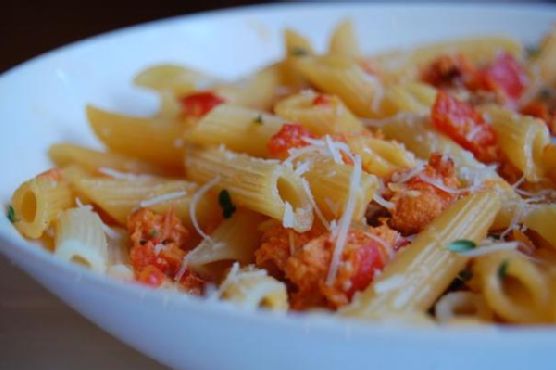Green Egg & Ham Sandwiches with Pesto
The recipe Green Egg & Ham Sandwiches with Pesto can be made in around 35 minutes. Watching your figure? This dairy free recipe has 454 calories, 19g of protein, and 28g of fat per serving. This recipe serves 4. For $1.52 per serving, this recipe covers 25% of your daily requirements of vitamins and minerals. This recipe from Simply Sugar and Gluten Free requires baby spinach, bacon, eggs, and chives. A couple people really liked this main course. This recipe is liked by 58 foodies and cooks. Taking all factors into account, this recipe earns a spoonacular score of 78%, which is solid. Similar recipes include Mustard Green Pesto and Egg Open-Faced Sandwiches, Pesto Egg Salad Sandwiches, and Daddy’s Egg & Ham Sandwiches.
Servings: 4
Preparation duration: 5 minutes
Cooking duration: 30 minutes
Ingredients:
4 cups lightly-packed baby spinach
8 slices bacon, preferably uncured, nitrate-free
8 sliced gluten-free bread, toasted (I used Canyon Bakehouse)
2 tablespoons chopped chives
4 large eggs, lightly beaten, preferably organic
1 tablespoon olive oil
sea salt and fresh ground pepper, as needed
Equipment:
aluminum foil
baking sheet
oven
paper towels
frying pan
cutting board
Cooking instruction summary:
Preheat the oven to 425 degrees F. Line a large baking sheet with aluminum foil. Set a baking rack on the baking sheet. Put the bacon on the baking rack. Bake for 30 minutes, carefully flipping halfway through, or until desired crispness is achieved. Transfer cooked bacon to a paper towel lined plate to cool.Heat the olive oil in a large skillet over medium heat. Rinse the baby spinach and shake lightly to remove some of the water. Put the spinach and chives in the skillet, season with salt and pepper, and cook, stirring, until the spinach is wilted. Remove cooked spinach and chives to a paper towel lined cutting board, removing as much moisture as possible. Discard the paper towels. Chop the spinach and chives roughly. Stir the chopped spinach and chives into the lightly beaten eggs. Return to the skillet and cook until the eggs are set.Divide the cooked eggs into four portions. If desired, spread pesto on the toasted bread, then put the bacon on one slice of bread and top it with one-fourth of the eggs. Top the eggs with microgreens if using. Complete the sandwich with the second slice of bread. Serve with extra pesto on the side if desired. (In my book you can never have enough pesto.)
Step by step:
1. Preheat the oven to 425 degrees F. Line a large baking sheet with aluminum foil. Set a baking rack on the baking sheet.
2. Put the bacon on the baking rack.
3. Bake for 30 minutes, carefully flipping halfway through, or until desired crispness is achieved.
4. Transfer cooked bacon to a paper towel lined plate to cool.
5. Heat the olive oil in a large skillet over medium heat. Rinse the baby spinach and shake lightly to remove some of the water.
6. Put the spinach and chives in the skillet, season with salt and pepper, and cook, stirring, until the spinach is wilted.
7. Remove cooked spinach and chives to a paper towel lined cutting board, removing as much moisture as possible. Discard the paper towels. Chop the spinach and chives roughly. Stir the chopped spinach and chives into the lightly beaten eggs. Return to the skillet and cook until the eggs are set.Divide the cooked eggs into four portions. If desired, spread pesto on the toasted bread, then put the bacon on one slice of bread and top it with one-fourth of the eggs. Top the eggs with microgreens if using. Complete the sandwich with the second slice of bread.
8. Serve with extra pesto on the side if desired. (In my book you can never have enough pesto.)
Nutrition Information:
covered percent of daily need















